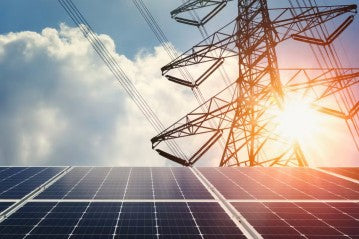
Solar panels are becoming increasingly popular among homeowners and businesses as a sustainable and cost-effective solution for generating electricity. One of the key aspects of harnessing solar energy is understanding how solar panels connect to the electrical grid. In this blog post, we will explore the process of connecting solar panels to the grid, including the necessary equipment and safety components involved.
1. Connecting Solar Panels to Your Grid
When solar panels generate electricity, they produce direct current (DC) power, which needs to be converted into alternating current (AC) power before it can be used by your home or business. Connecting solar panels to the grid allows you to not only generate your own electricity but also sell any excess power back to the utility company, creating a two-way flow of electricity.
2. Load Side and Supply-Side Connection
There are two main methods for connecting solar panels to the grid: load side connection and supply-side connection.
Load Side Connection: In a load side connection, the solar panels are connected to the electrical system on the customer's side of the meter. This means that the solar power generated by the panels is first used to meet the electrical demand of the premises. Any excess electricity can then be sent back to the grid.
Supply-Side Connection: In a supply-side connection, the solar panels are connected directly to the utility grid on the utility's side of the meter. This allows the solar power to be fed directly into the grid, and the utility company credits the customer's account for the electricity generated.
3. Connection Requirements for Grids

Connecting solar panels to the grid requires compliance with certain connection requirements, which vary depending on the location and the specific regulations in place. These requirements are in place to ensure the safety and stability of the electrical grid. Some common connection requirements include:
a) Grid Interconnection Agreement: Before connecting your solar panels to the grid, you will need to enter into a grid interconnection agreement with your utility company. This agreement outlines the terms and conditions for connecting your solar system to the grid and the process for net metering or selling excess electricity.
b) Electrical Codes and Standards: Solar panel installations must adhere to local electrical codes and standards to ensure safe and reliable operation. These codes cover aspects such as wiring, grounding, disconnect switches, and overcurrent protection.
c) Metering and Monitoring: Grid connection typically requires the installation of a bi-directional meter that can measure the flow of electricity both to and from the grid. This allows for accurate metering of the electricity consumed from the grid and the excess electricity fed back to the grid.
4. Equipment Required

To connect solar panels to the grid, several essential equipment components are necessary:
a) Solar Inverter: The solar inverter is a crucial piece of equipment that converts the DC power generated by the solar panels into AC power suitable for use in homes and businesses. It ensures that the electricity produced by the solar panels is synchronized with the grid's frequency and voltage.
b) Switchgear: Switchgear is used to control and protect the electrical circuits in the solar power system. It includes components such as circuit breakers, disconnect switches, and fuses, which play a vital role in isolating and protecting the solar system from grid faults or other electrical issues.
c) Bi-directional Meter: As mentioned earlier, a bi-directional meter is necessary to measure the flow of electricity to and from the grid accurately. This meter allows for accurate tracking of the electricity consumed and produced by the solar system, enabling proper billing and credit calculations.
5. Grid Safety Components
Safety is a paramount consideration when connecting solar panels to the grid. Several safety components ensure the protection of both the solar system and the grid:
a) Grounding System: A grounding system is essential for safely dissipating electrical faults and preventing electrical shocks. It ensures that any excess electricity is directed harmlessly into the ground, reducing the risk of electrical hazards.
b) Overcurrent Protection: Overcurrent protection devices, such as fuses or circuit breakers, safeguard the solar system and the grid from excessive electrical currents. They help prevent damage to the equipment and minimize the risk of fires or electrical accidents.
c) Disconnect Switches: Disconnect switches provide a means to isolate the solar system from the grid. They allow for safe maintenance, repair, or shut off in case of emergencies, ensuring the safety of both the system owners and utility workers.
Conclusion
Connecting solar panels to the grid is a crucial step in maximizing the benefits of solar energy. By understanding the load side and supply-side connections, connection requirements, necessary equipment, and grid safety components, customers can make informed decisions when considering a solar panel installation. It is always recommended to consult with a professional solar installer who can guide you through the process and ensure compliance with local regulations, making your solar journey safe and hassle-free. Embracing solar power not only helps reduce your electricity bills but also contributes to a greener and more sustainable future.
At Ecgsolax, we offer a wide range of solar products, such as solar charge controller, inverters, solar batteries, etc. Join us in creating a truly sustainable future!

0 Kommentare